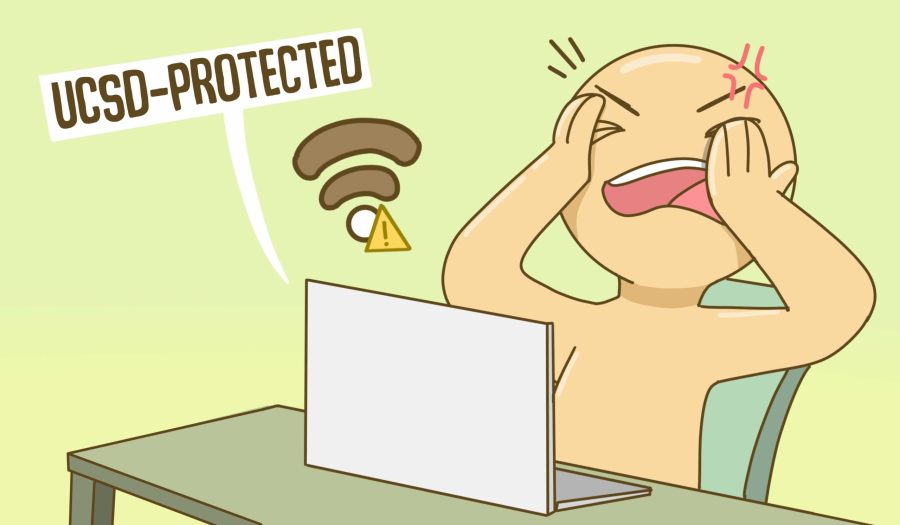I think I can speak for a lot of us when I say I was ecstatic, yet skeptical, to hear the news this past June that UC San Diego was returning to a majority of in-person classes for Fall Quarter 2021. It seemed like the light at the end of the very long tunnel of online school during the pandemic. However, to announce such a plan so prematurely felt too good to be true, and it was, as UCSD is slowly but surely diverging from its initial goal of complete normalcy, notifying students of modality changes mere weeks or even days before or after their classes started. This is, to put it bluntly, ridiculous and illustrates the prominent communication problems between UCSD, its administration, and its students.
UCSD, as illustrated through its recent decisions on modality changes, has continuously overlooked student success with little communication and resources to accommodate their disorganization. Generally speaking, UCSD’s decisions have been seemingly quickly made and unorganized in reaching students. Lightly written emails days before classes start saying “modality changes” doesn’t cut it. Us students deserve more than that. It’s time for our money to start paying off with an equally decent and in-person education. Additionally, if UCSD is going to make courses virtual, the internet needs to be accessible. Recently, there have been Wi-Fi outages almost daily in different parts of campus, leaving students unable to use the internet or join their Zoom calls. It is irresponsible to force students into remote learning and not ensure that they have the resources to do so.
UCSD and its professors are also choosing to do a hybrid format that doesn’t make a ton of scientific sense and seems to have little health benefits for the students. For instance, Having a Tuesday lecture in person and a Thursday lecture online with all students going to the Tuesday lecture doesn’t make sense. The same amount of people are going to be in class on Tuesday as they would have been on Thursday.
UCSD’s Return to Learn plan announced in June that fall instruction would be “primarily in person.” UCSD also has a reputation of being a STEM school, specifically known for its rigorous chemistry classes and chemistry program, placing competitively in national rankings. Yet, just before instruction began, UCSD announced that a good portion of language and chemistry classes would be going online. As of now, whether or not a course is virtual or in person is on a professor by professor basis. Letting professors choose which modality they prefer isn’t fair for the students and isn’t taking their best interest into account — including various CHEM 6 series classes, a student’s first introduction to the realm of college chemistry classes and the intensity of UCSD science courses.
It is necessary and crucial to learn chemistry in person. It is very much a hands-on subject and requires extensive attention from students in order to fully understand its multifaceted concepts. Especially for asynchronous chemistry classes, watching the lectures but not being able to ask questions in real time is extremely frustrating and takes away from the learning process.
Besides the general aspect of attention deficits during Zoom classes, language courses in general take into account more specific aspects of learning that are best done in person. For one, hearing pronunciation over Zoom is more difficult than in person. When also taking into account internet issues and lag, hearing the correct way to pronounce certain words and phrases can be more difficult or entirely impossible. This makes learning the language authentically more of an obstacle.
For those who do not have the luxury of going to class in their rooms, finding a quiet, accessible place on campus to engage in the language classes is also an issue many students are facing. Since language classes require participation and attendance, going to class in the library or in public, places not optimal for speaking during an online class, can cause hindrance to their education.
With UCSD continuing their trend on poor communication from administration to students, the housing process left many living either off campus or in on-campus overflow housing. Living off campus in La Jolla can be extremely expensive, while living on campus in a single room can be expensive as well. Some of these students living on and off campus stayed at home last year due to online classes.
With many in-person classes changing suddenly to online, it begs the question: “Is it really financially worth it to be on campus if I don’t need to be on campus for class?” The answer is up to each individual student, but it is unfair for the administration to not notify or at least warn students of modality changes before they commit to housing. The extent of remote classes is large with some students having all in-person and some having all online. Not only did UCSD force students into expensive housing, but they also took away a chunk of the perks of being on campus. UCSD continues to make promises they can’t keep, and it’s time they start taking responsibility for them.
Art by Andrew Diep for the UCSD Guardian.














